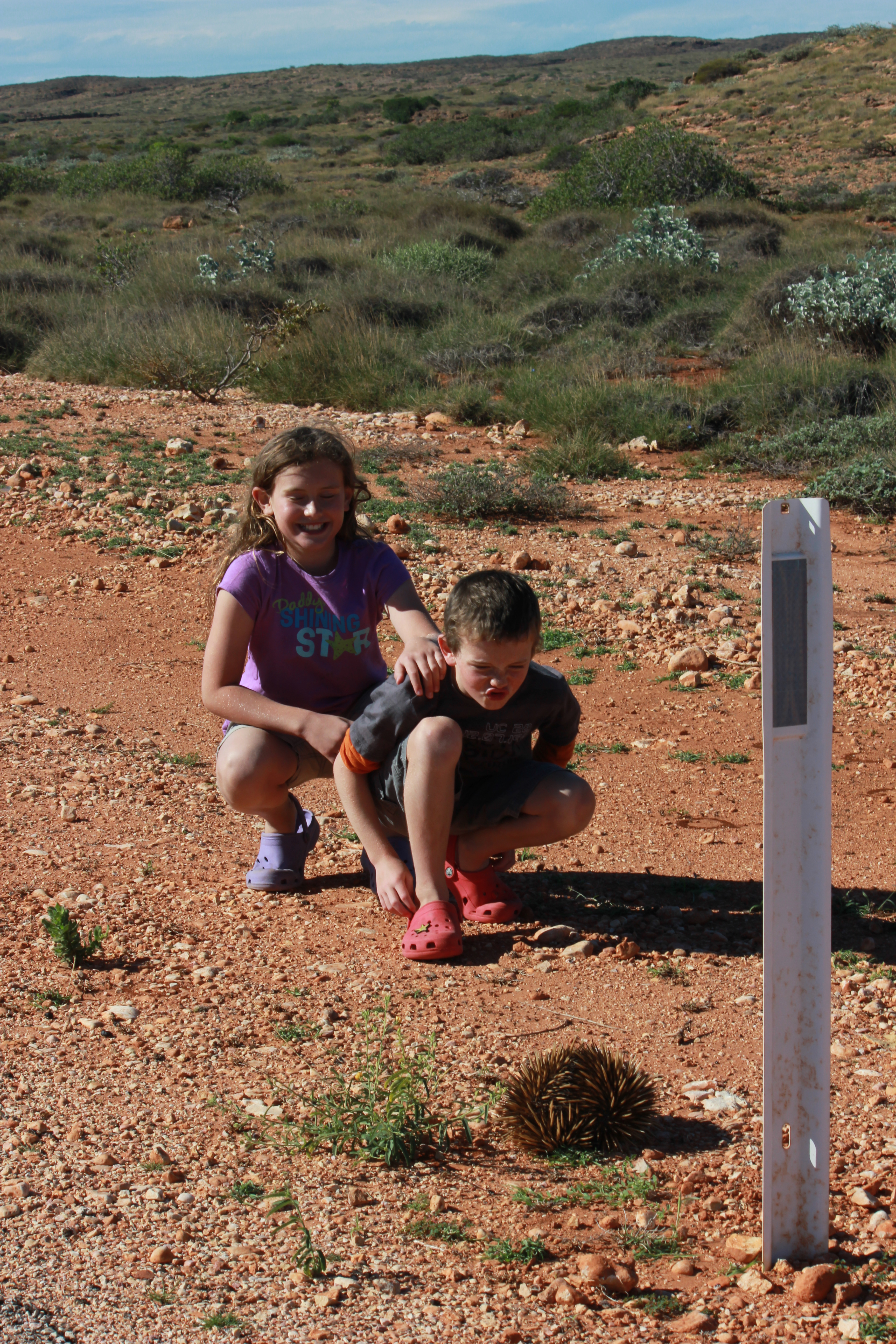It was windy again last night but it quietened down after midnight, this morning was clear and pleasant so we decided to drive to Turquoise Bay which is one of our favourite beaches in the Cape Range National Park. The snorkelling here is excellent and it didn’t disappoint this time. We walked south along the beach, swam out to the coral then allowed the current to take us back to our starting point. We saw lots of colourful fish and coral and I managed to video this Moray eel.
We had lunch on the beach, skimmed a few flat shells (“Daddy I got six bounces!”) then headed back along the road to Exmouth. The drive is always interesting – particularly at dusk when the Kangaroos and Emus wander onto the road, the Kangaroos always seem to face west to watch the sunset and seem very reluctant to move even when you approach them in a car.
Today’s drive was another good one. We saw lots of Kangaroos, a couple of Emus, and several large Eagles (Wedge Tailed Eagles I think) feasting on the Road-kill. Oh yes, there’s plenty of Road-kill in Western Australia – particularly Kangaroos. They don’t just get hit by vehicles, they have been known to actually run (hop) into the side of moving vehicles. On a previous trip I asked a local chap why Kangaroos don’t move when approached by cars. He took his hat off, scratched his head and thought for a while then grinned at me and said; “Well it’s like this mate, cars have been here for less than two hundred years. The Roos have been here for thousands of years but they’re real-slow learners”.
Today the drive highlight was seeing an Echidna wandering alongside the road. We stopped so the children could get a close look and took some photos. Further up the road we saw another two Echidnas. It’s like waiting for a bus; you don’t see one for ages then three turn up at the same time!
Echidnas look a bit like a porcupine but they have some interesting traits. They are monotremes (mammals that lay eggs). At the beginning of the mating season (July to August) the female echidna develops a pouch and, a few weeks after mating, she digs a burrow and lays one egg into her pouch. Ten days later a blind, hairless baby echidna (a puggle) hatches and attaches itself to a teat inside the pouch. The puggle remains inside the pouch until it develops spines (the mother must be quite uncomfortable!) then the puggle leaves the pouch (the mother must be relieved!) but it still stays in the burrow for the next 6 months and continues to suckle. Weird or what?

